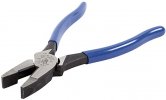Litninbolt
Registered
Ok, so how the heck do you add (and remove the LGB brass track joiners that have the tab that sits down in the plastic sleeper? I get some track (used) and the brass joiners are gone so I have to replace…. How do you pop the sleeper back up on the rail?
Also, is there a best way to pinch , crimp etc the brass joiners before sliding track on so the friction fit is sound?
Is everybody using conductive paste? And if so lots, little?
Also, is there a best way to pinch , crimp etc the brass joiners before sliding track on so the friction fit is sound?
Is everybody using conductive paste? And if so lots, little?

